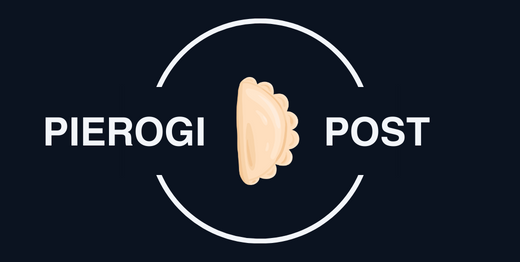As September rolls around, millions of students across Poland prepare to head back to school, stepping into a well-established education system that emphasizes academic rigor, critical thinking, and a balanced development of skills. The Polish education system, rooted in centuries of tradition, has undergone significant reforms in recent decades to keep up with global standards and modern learning needs. Whether you’re a parent, student, or an expat planning to live in Poland, understanding the structure of Polish education is crucial to navigating its many stages and requirements.
In this blog post, we’ll break down the Polish education system, from early childhood through higher education, while exploring key aspects such as grading, exams, and the school year structure. We’ll also discuss the importance of foreign languages in the curriculum, the role of vocational education, and how Poland’s system compares to other countries around the world.
1. Early Childhood Education: Preschool (Przedszkole)
The foundation of a child’s learning in Poland begins with preschool (przedszkole), which is not compulsory but widely attended by children aged 3 to 6. Polish preschools focus on socialization, play-based learning, and early literacy skills. These early years are seen as a vital time for developing communication skills, curiosity, and a love for learning.
While attendance is optional at age 3, compulsory education begins at age 6, when children must complete what is known as the “zerówka” year, or zero class, which is a preparatory year before starting formal schooling. This year helps to bridge the gap between preschool and primary school, focusing on basic reading, writing, math, and social skills. Polish parents highly value preschool education, and many enroll their children in bilingual or specialized preschools to give them an early start on foreign languages or artistic development.
2. Primary Education: The Foundation of Polish Schooling
At age 7, children in Poland begin their primary education (szkoła podstawowa), which now lasts for eight years. This stage is divided into two cycles: the first cycle (grades 1-3) is focused on integrated teaching, where one main teacher covers most subjects, helping children adjust to structured learning. This phase emphasizes basic literacy and numeracy skills, as well as personal development and creativity.
The second cycle (grades 4-8) introduces subject-specific teachers for core subjects like mathematics, science, history, and languages. During these years, students also begin learning their first foreign language, typically English, though some schools may offer German, French, or Spanish. By the end of grade 8, students are expected to take a compulsory national exam (egzamin ósmoklasisty), which tests their knowledge in Polish language, mathematics, and a foreign language. The results of this exam play a significant role in determining the student’s next step in their education journey.
3. Secondary Education: Choosing a Path
After completing primary education, students move on to secondary education, which is divided into several types of schools. The most common options include:
- Liceum Ogólnokształcące (General Secondary School): A four-year general academic school designed for students who wish to pursue higher education. Liceum prepares students for the Matura exam (equivalent to high school graduation exams), which is required for university admission.
- Technikum (Technical School): A five-year program that combines general education with vocational training. Technikum prepares students for both the Matura exam and a professional career, as it provides a technical qualification that allows them to enter the workforce after graduation.
- Branżowa Szkoła I stopnia (Vocational School): A three-year vocational school focused primarily on practical training for specific careers, such as mechanics, electricians, or hairdressers. Students at vocational schools do not typically take the Matura exam, but they can pursue further education through post-secondary schools.
At the end of secondary education, students in both liceum and technikum take the Matura exam, which is a comprehensive exam testing knowledge in Polish, mathematics, a foreign language, and an elective subject of their choice (often geography, biology, or history). This exam is the key to gaining admission to universities in Poland, making it one of the most critical assessments in a Polish student’s life.
4. Higher Education in Poland: Universities and Beyond
Poland boasts a robust higher education system with many world-class institutions, such as Jagiellonian University in Kraków and the University of Warsaw. After successfully passing the Matura exam, students can apply to universities and other institutions of higher learning. Poland offers a wide variety of university programs at both public and private institutions, ranging from humanities and social sciences to engineering, medicine, and law.
Higher education in Poland follows the Bologna process, meaning it is structured similarly to other European systems. Students can earn a Bachelor’s degree (Licencjat or Inżynier) in three to four years, followed by a Master’s degree (Magister) in one to two years, and finally a Doctorate (PhD) after additional years of specialized study.
Poland is also part of the Erasmus+ program, which allows students to participate in exchange programs with other European universities, broadening their academic horizons and offering cross-cultural experiences. Additionally, the country’s universities have increasingly begun offering programs in English to attract international students, which has boosted Poland’s reputation as an affordable and high-quality destination for higher education.
5. Grading and School Year Structure
The Polish grading system uses a 6-point scale, where 6 is the highest grade (excellent), and 1 is the lowest (fail). The grades are as follows:
- 6 – Excellent
- 5 – Very Good
- 4 – Good
- 3 – Satisfactory
- 2 – Pass
- 1 – Fail
The school year in Poland is divided into two semesters, with the first semester running from September to January, and the second semester from February to June. Students have a winter break in February, a spring break during Easter, and summer vacation begins in late June, typically lasting until the beginning of September.
6. The Importance of Foreign Languages
Foreign language learning is a vital component of Polish education, with students starting their first foreign language (usually English) as early as grade 1 or 2. By the time students reach secondary school, they often begin studying a second foreign language. Mastery of English is considered essential for higher education and career opportunities, as Poland is increasingly connected to the global economy.
In many secondary schools, English is the primary language taught, but other languages like German, French, and Spanish are also popular. This multilingual education reflects Poland’s emphasis on preparing students for international opportunities, as proficiency in foreign languages is a valuable skill in Poland’s growing global presence.
7. Vocational Education: A Path to Practical Skills
Poland’s education system places significant importance on vocational education, particularly through its technical schools (technikum) and vocational schools (branżowa szkoła). These institutions provide hands-on, practical training in fields like engineering, healthcare, IT, and trade professions, ensuring that students are prepared for the labor market immediately after graduation.
In recent years, the Polish government has prioritized vocational education as a way to address skills shortages in key industries and reduce youth unemployment. Vocational schools often partner with businesses and industries, providing students with internships and apprenticeships that offer valuable work experience. This dual approach to education helps students develop both theoretical knowledge and practical skills, making them highly employable after completing their studies.
8. Comparing Poland’s Education System to the World
Poland’s education system ranks highly among international assessments. For example, the Programme for International Student Assessment (PISA), which compares educational systems across the globe, has consistently ranked Polish students above average in reading, mathematics, and science. Poland’s education reforms over the past two decades, including the extension of primary education and the introduction of new curricula, have contributed to its success in these areas.
Poland’s focus on academic achievement, coupled with its efforts to modernize and globalize its higher education system, ensures that its students are well-prepared for both local and international opportunities. Additionally, Poland’s growing emphasis on vocational training provides a practical alternative to traditional academic pathways, making the system flexible and adaptable to the needs of the economy.
Conclusion: A System of Tradition and Innovation
Poland’s education system is a unique blend of tradition and innovation, offering students a solid foundation in both academic and practical skills. From early childhood education to advanced university programs, the system is designed to foster intellectual curiosity, critical thinking, and global competence. With its strong emphasis on languages, vocational training, and university preparation, Polish education equips students with the tools they need to thrive in a rapidly changing world.
As the country continues to invest in education reforms and international collaborations, Poland’s students are poised to contribute not only to their own nation’s success but also to the global community. Whether you’re a parent, student, or educator, understanding the Polish education system provides valuable insights into how the next generation of leaders is being shaped.




